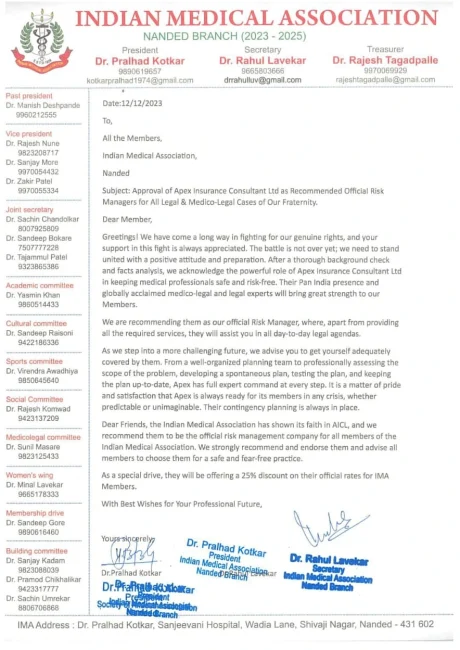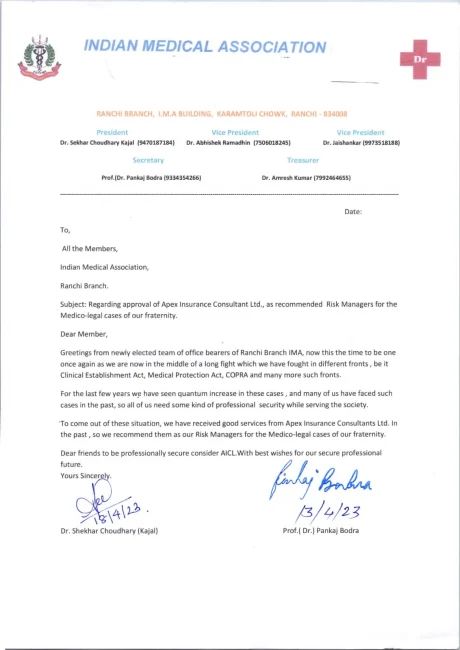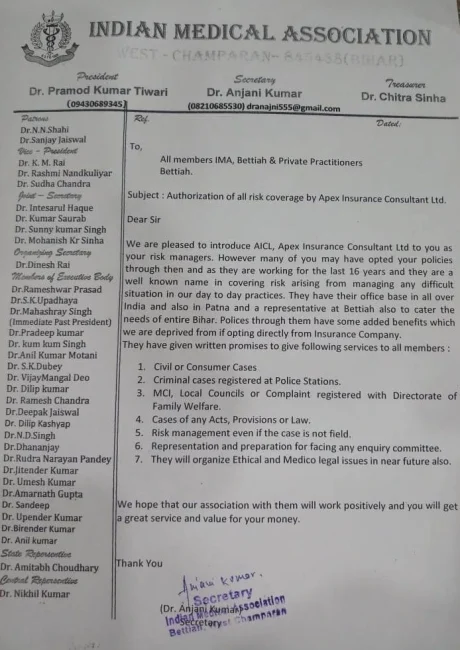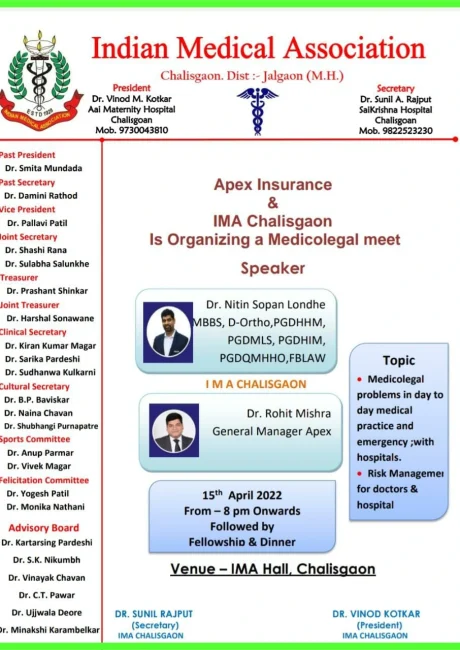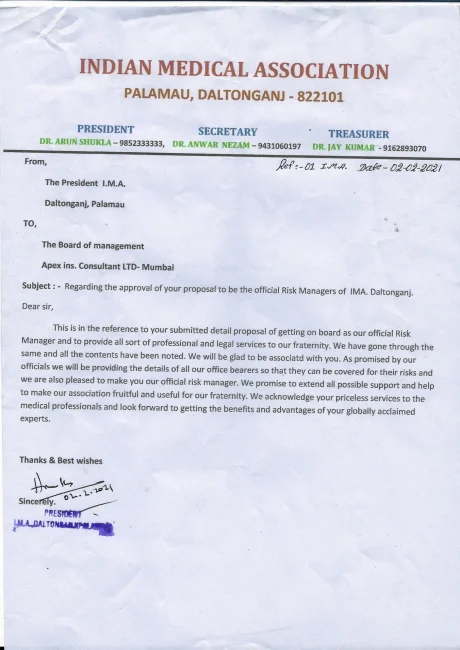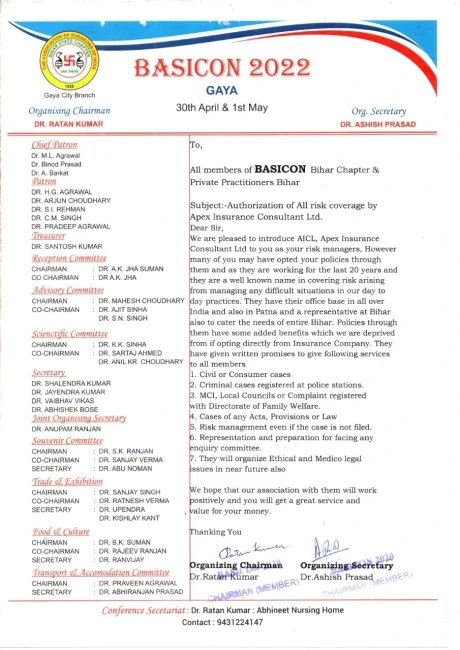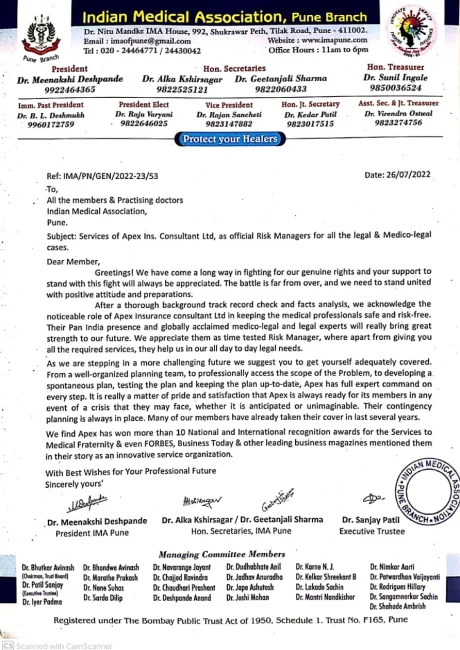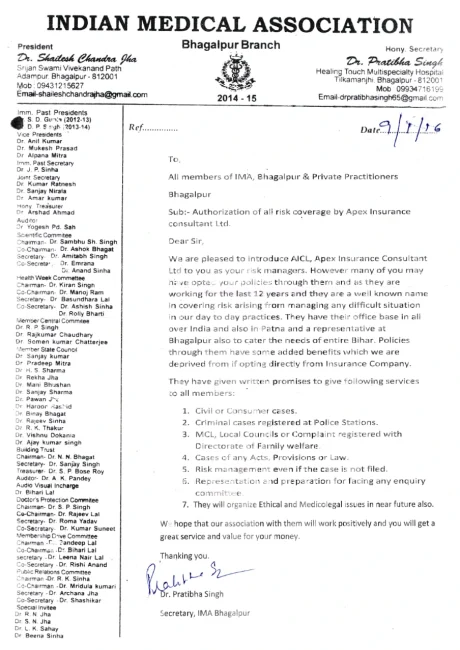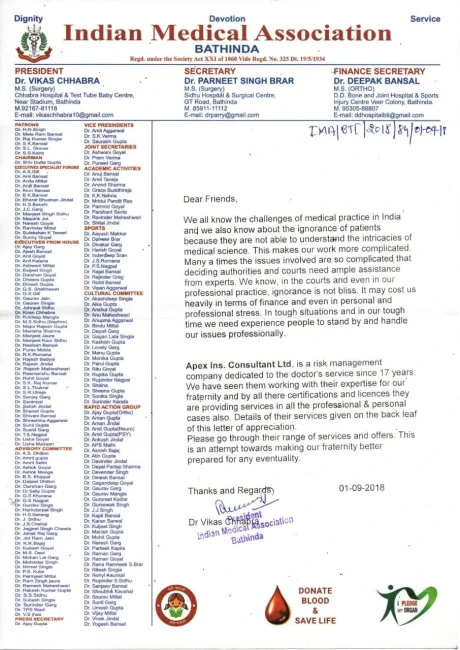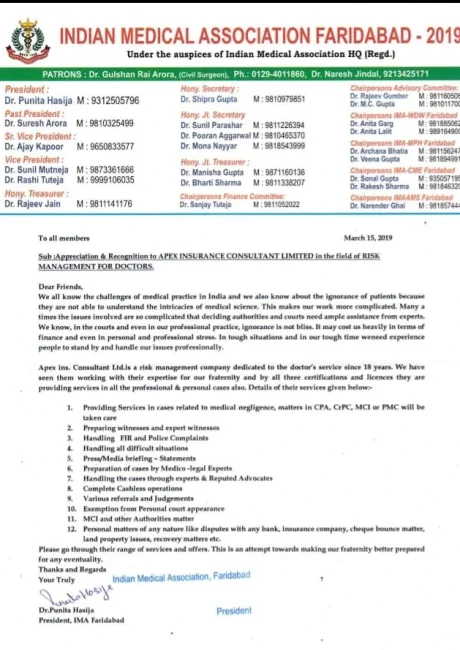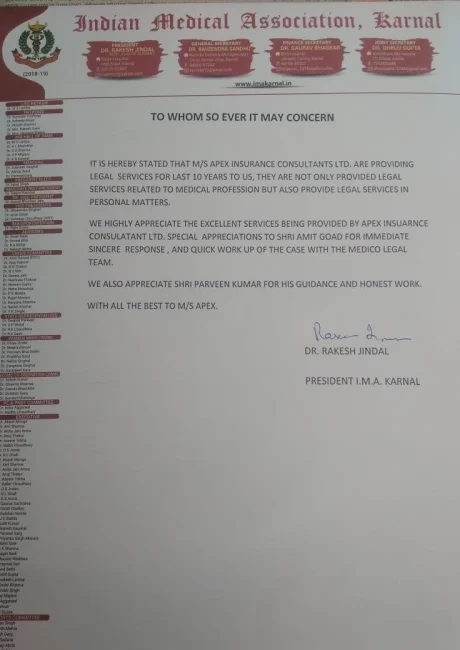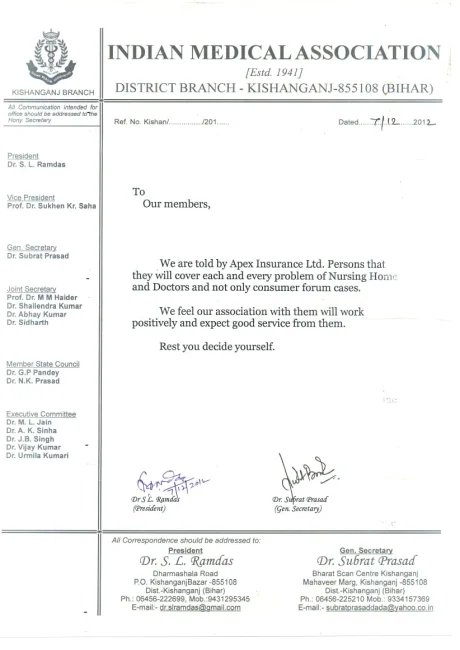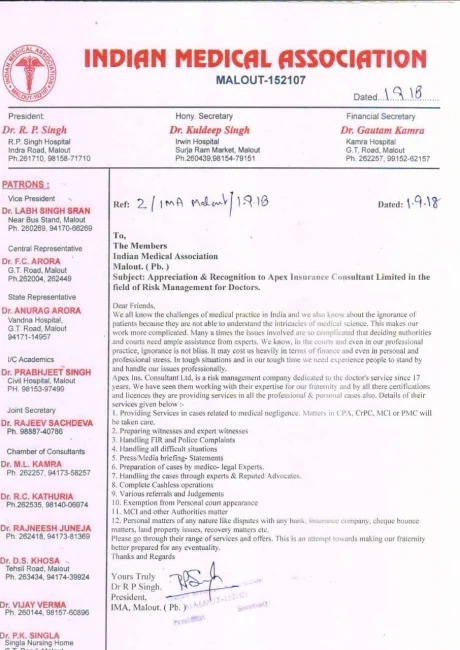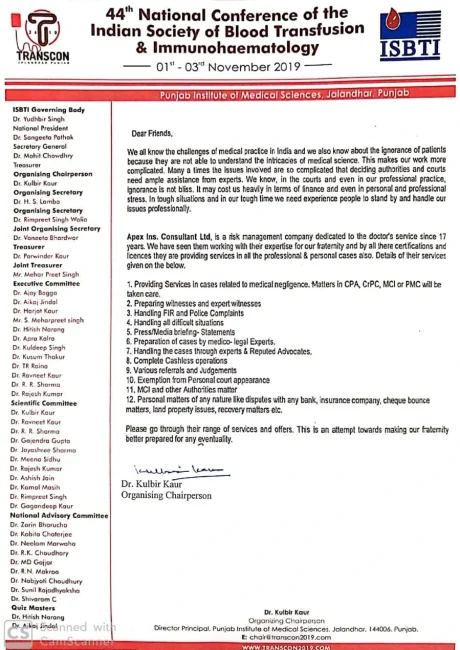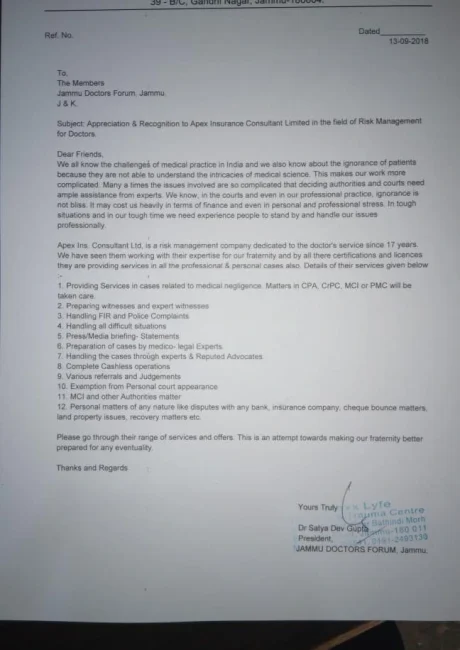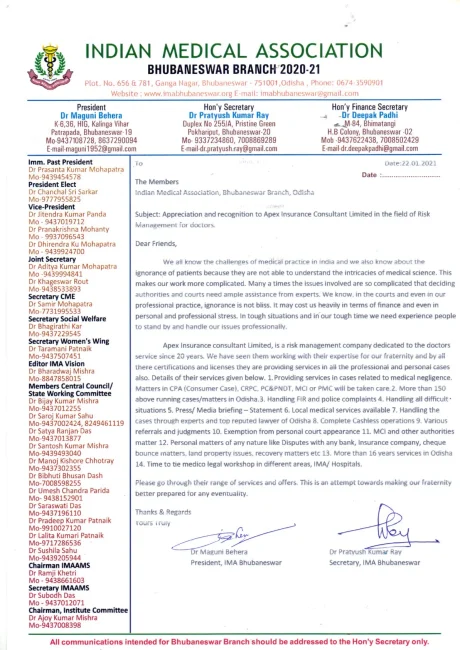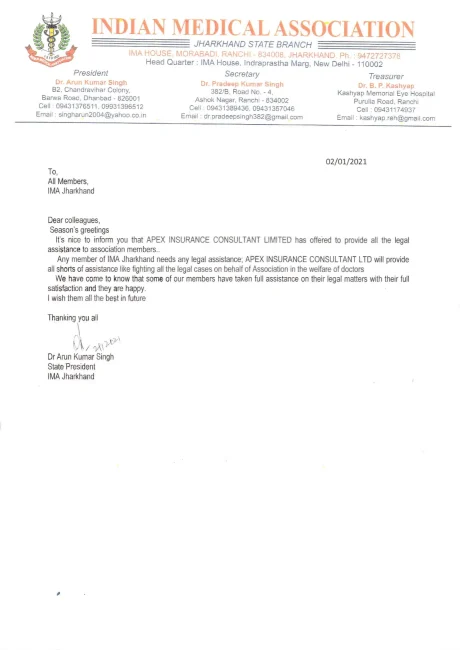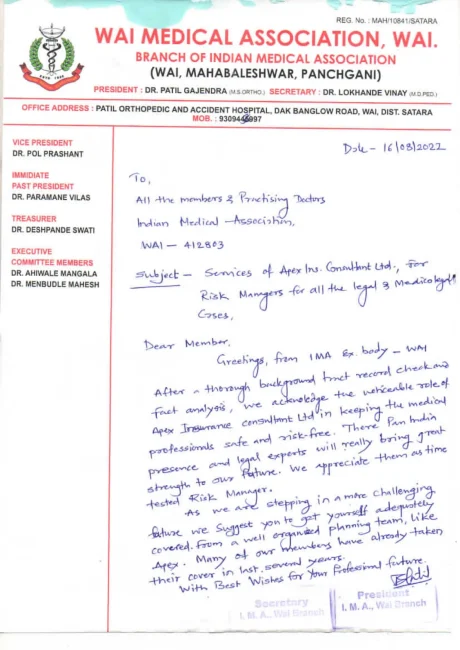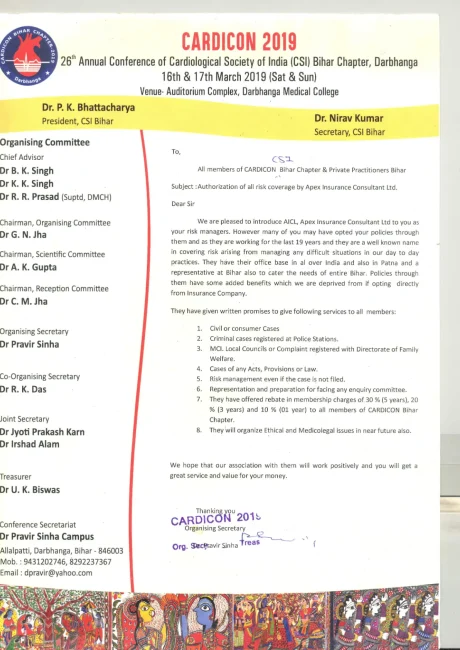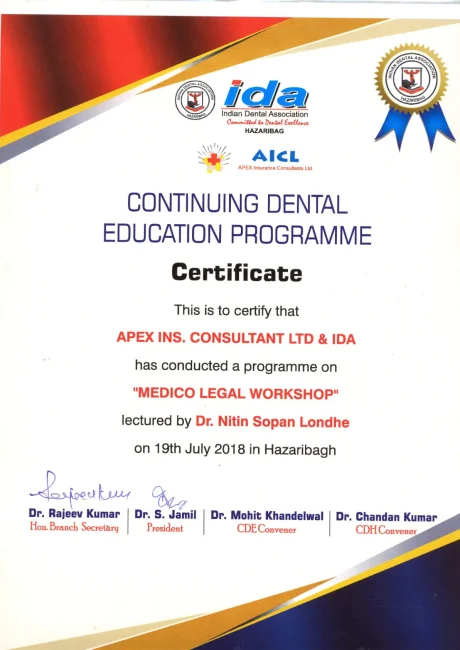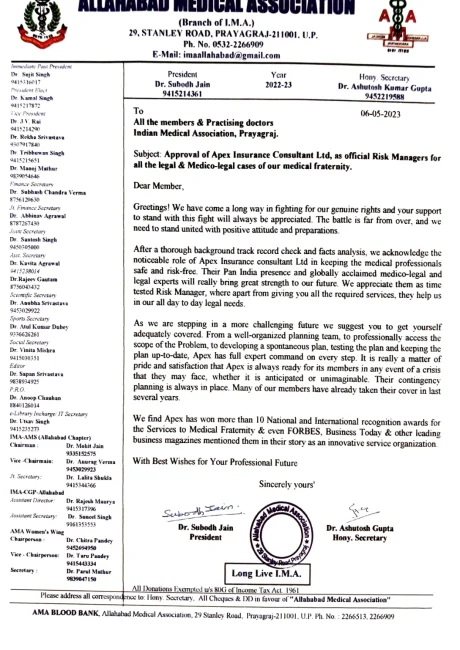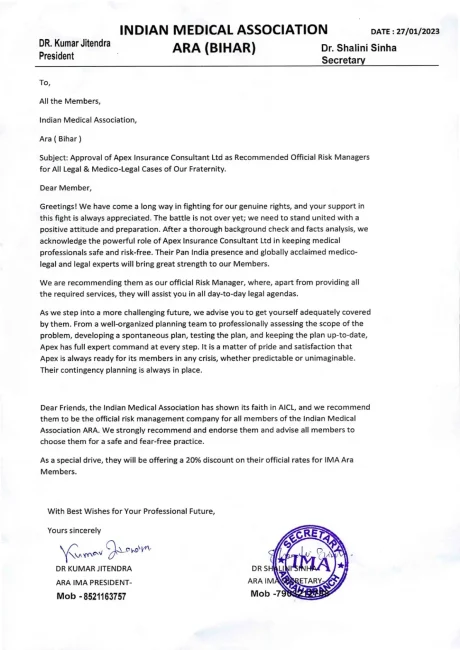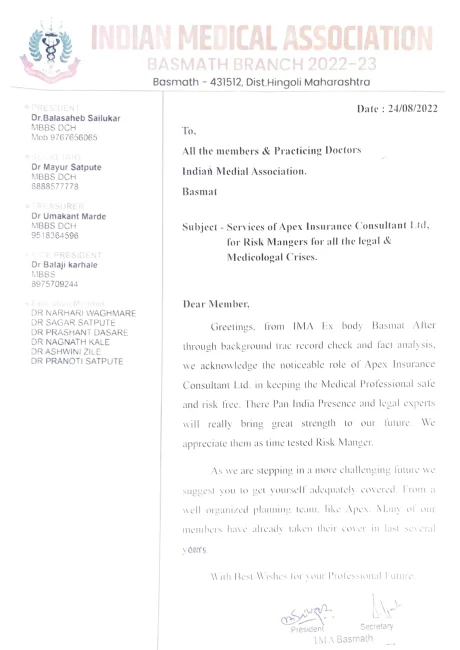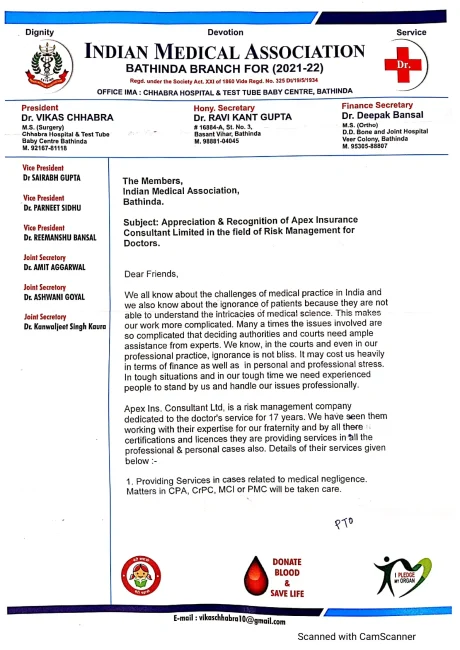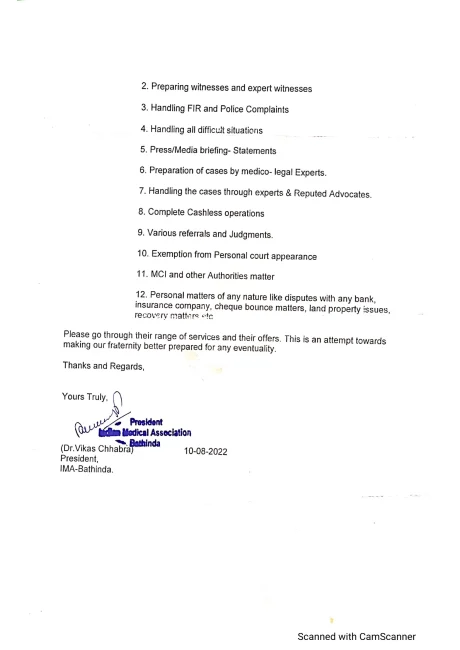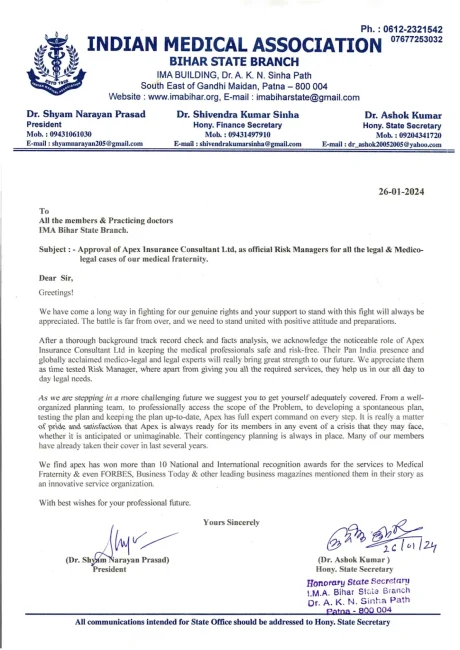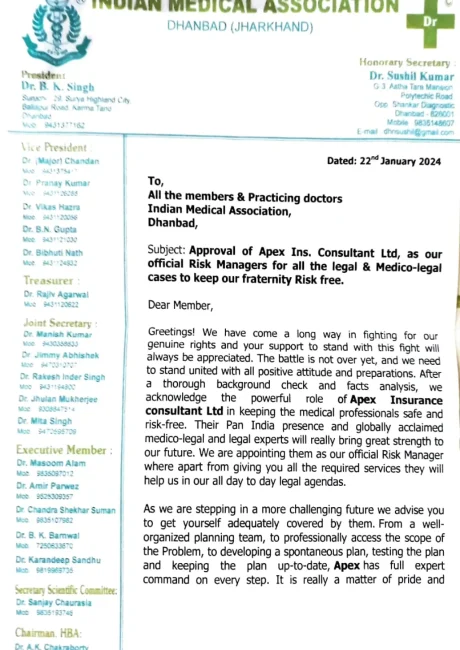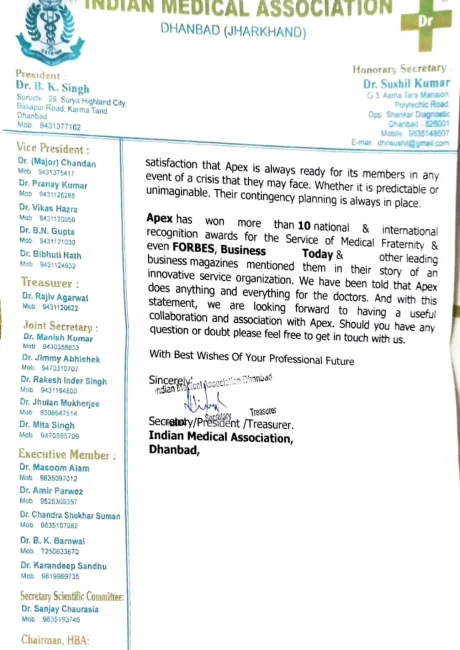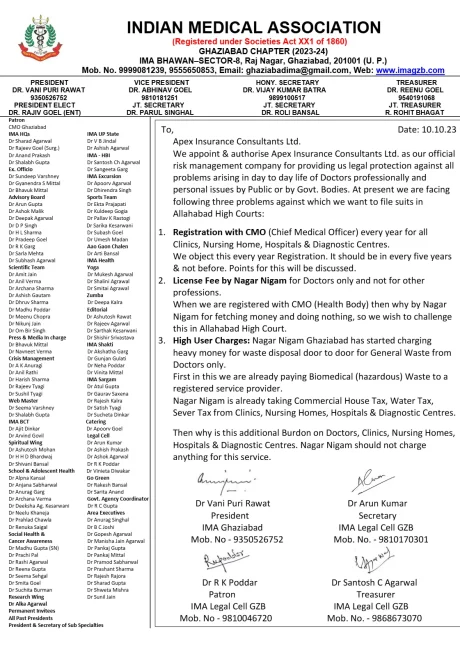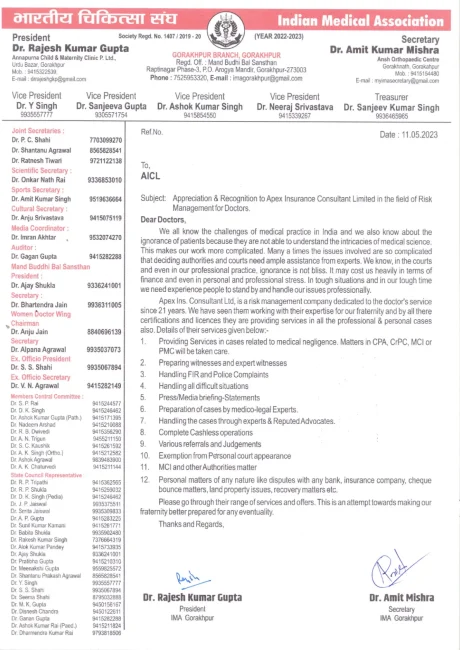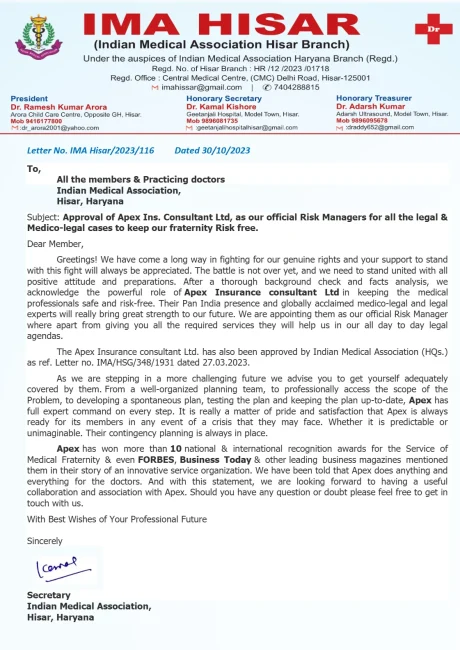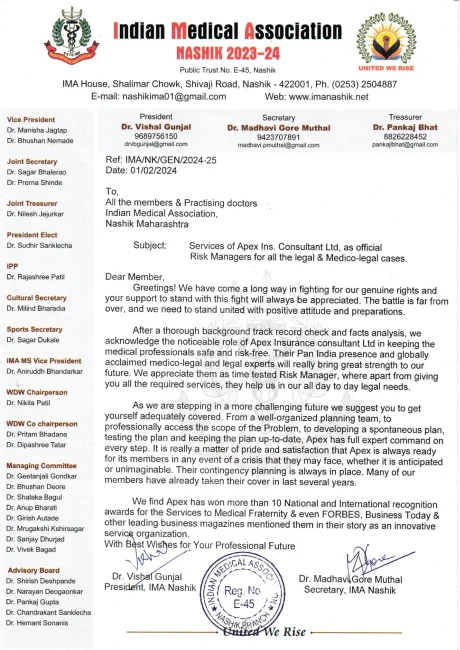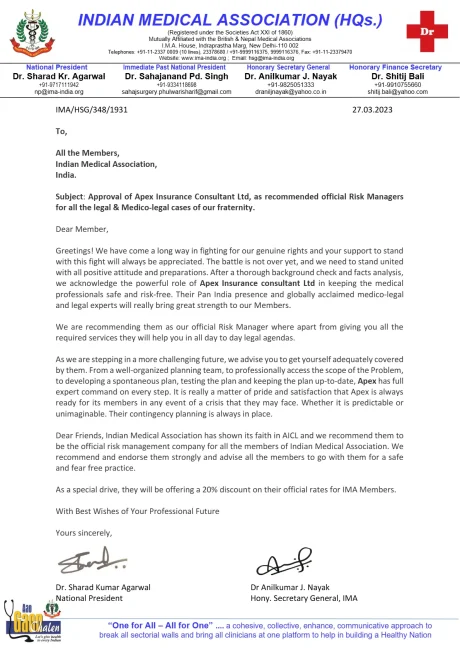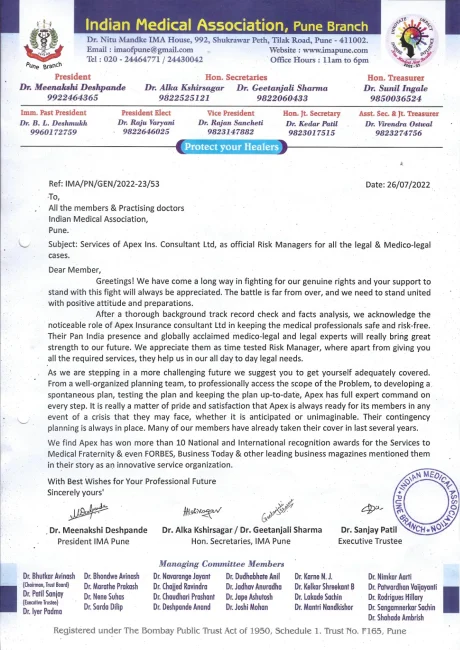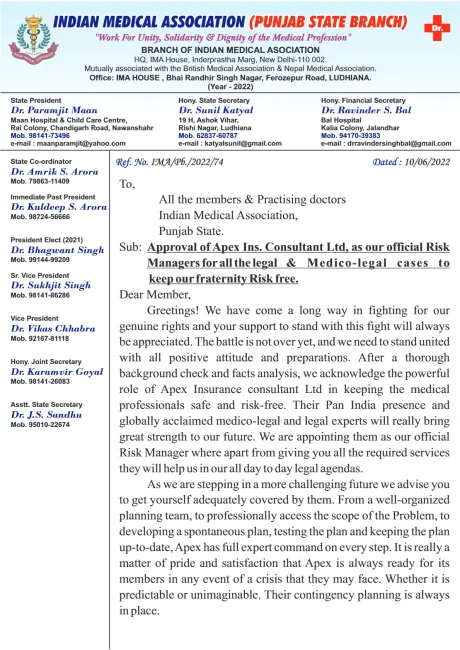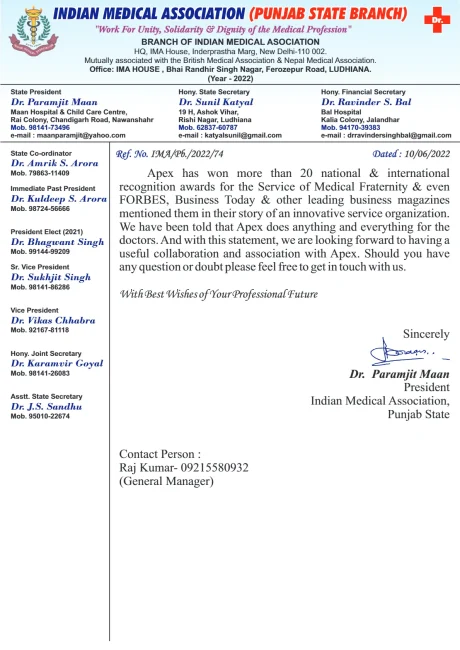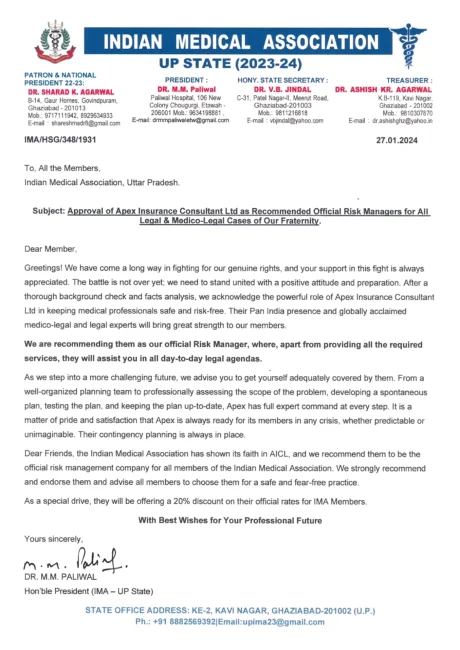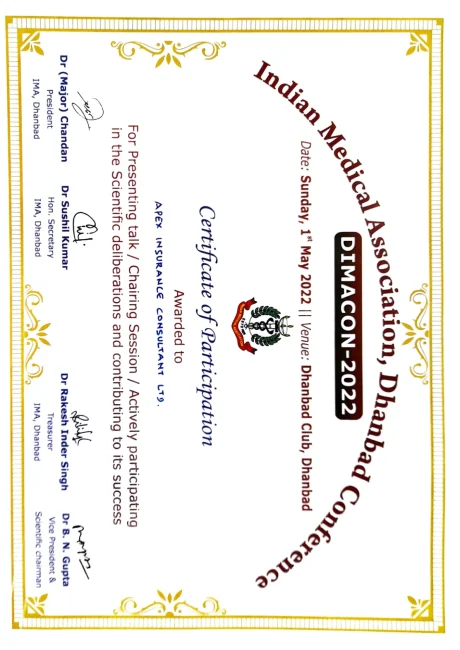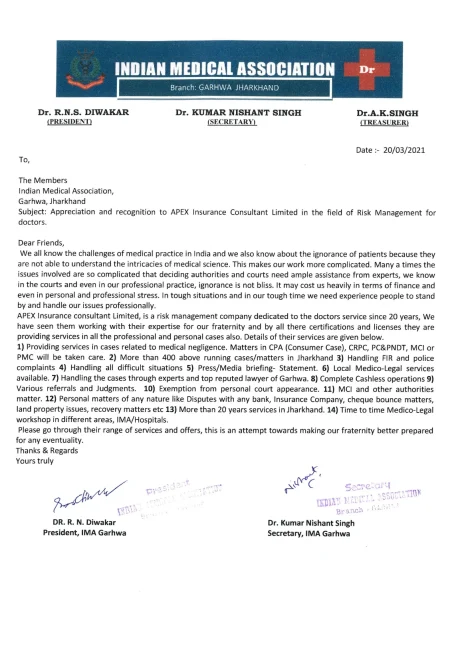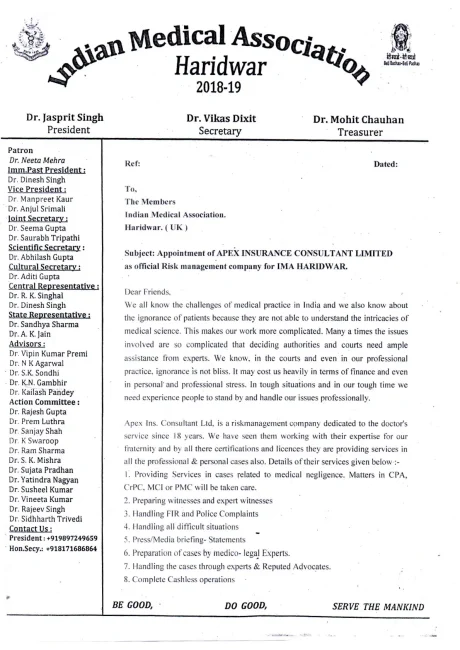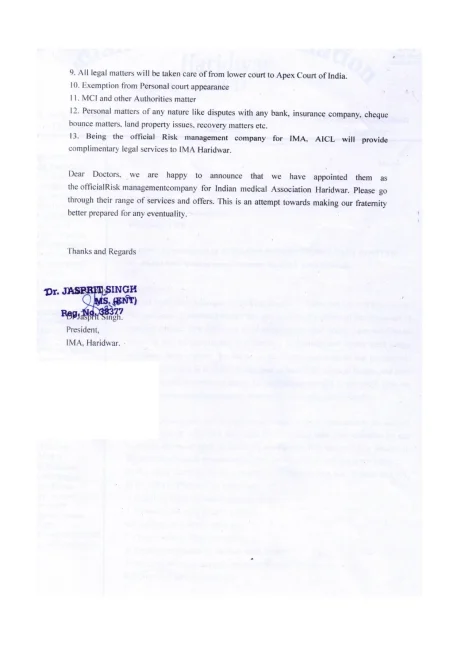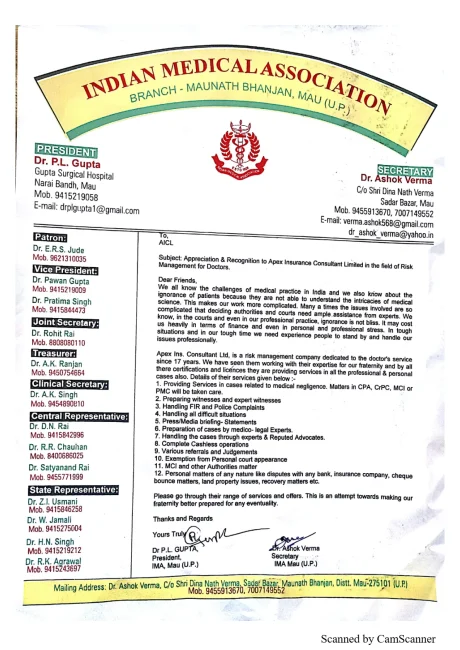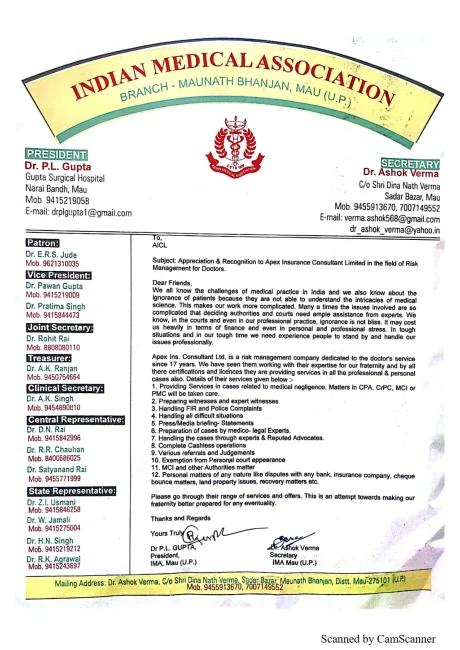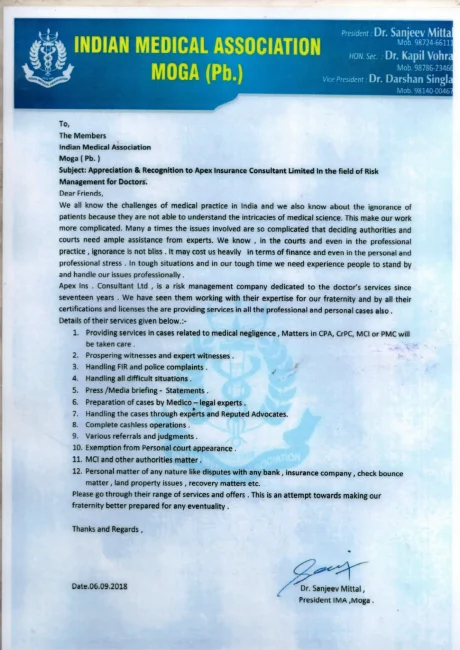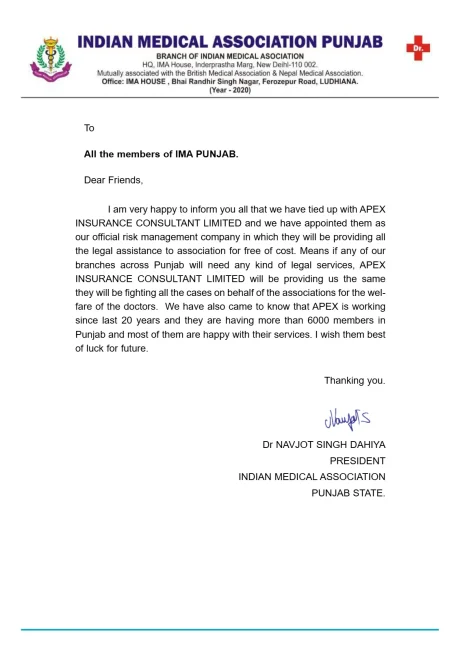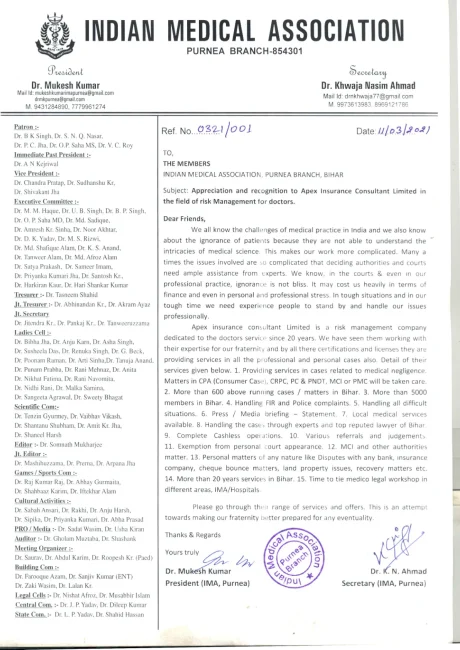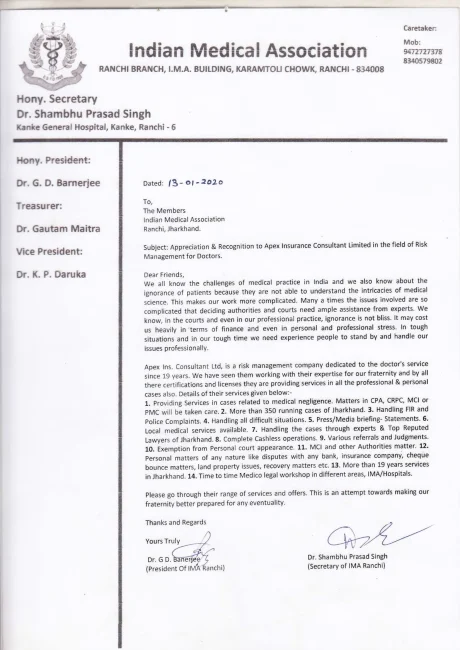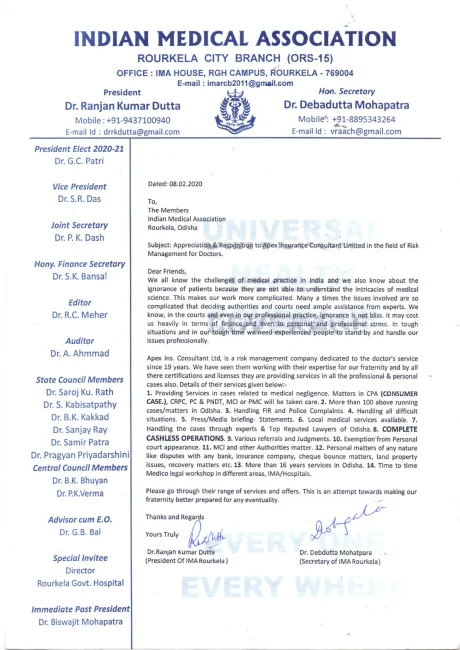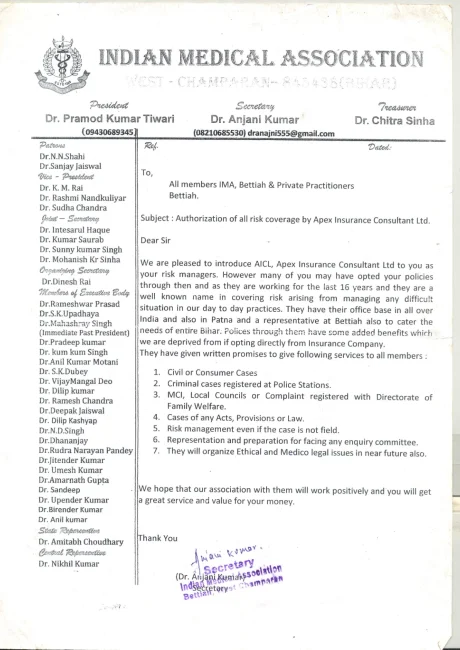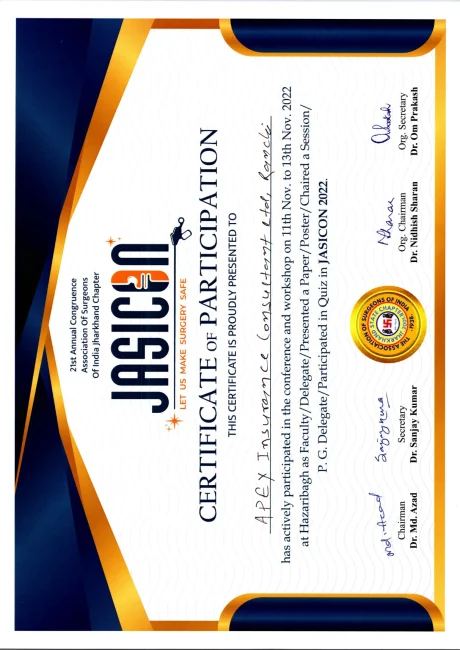Dr. (Prof.) Mahesh Baldwa,
M.D,D.C.H, FIAP
MBA, LL.B,LL.M , Ph. D(law)
SENIOR PEDIATRICIAN & MEDICOLEGAL ADVISOR
Formerly Assistant Professor of Pediatrics at T.N. Medical College and Nair Hospital, Mumbai-400008
Ex. Asst. Professor JJ Hosp, Grant medical college
Professor, paper setter & examiner of law to postgraduate students of University Department of Law, University of Mumbai
Baldwa Hospital, Sumer Nagar,S.V. Road,
Borivali (West)Mumbai 400 092
INTRODUCTION
Knowledge is power. Ignorance leads to confusion and uncertainty. Confusion and uncertainty, in turn, breed tensions and wrong actions. Having a knowledge of the legal provisions regarding adolescent consent and confidentiality will empower you to deal with this ticklish issue appropriately and equip you to tackle law enforcers.
PRESERVE THE CONFIDENTIALITY OF AN ADOLESCENT
Doctors can do a lot to preserve the confidentiality of an adolescent, steering clear of parental knowledge or consent, but at the same time, when in doubt, a clinician should inform the police under Section 154 of the Criminal Procedure Code (CrPC) without hesitation. Otherwise one has to be prepared to be hauled up under Section 156 of the CrPC.
PLANNED APPROACH
A clever, planned approach is suggested to support the adolescent physically, sexually, mentally and psychologically without evading the law. To draw an analogy from legal parlance, ‘Tax planning is not a crime, but tax evasion is.’ Ensuring adolescent confidentiality in a planned manner, without usurping parental and legal authority, is the way to tackle the issue, though this can prove in practice.
IDEAL COMPONENTS OF VALID CONSENT
The ideal consent should be patient-specific and procedure-specific. It should be with full disclosure about disease and treatment, without hiding anything free from misrepresentation, coercion, fraud and undue influence. The consent must be in writing and should be signed by the authorized signatory in the presence of at least two or more witnesses.
Parties to consent
It is important for the doctor to obtain proper consent from the patient/attendant/relative.
The following should give you an idea of the legal status of an adolescent (as per Indian law) and the issues related to his/her seeking medical treatment.
- An adult is a person who has completed 18 years of age as per the Indian Majority Act-1875.
- As an adolescent is less than 18 years old, he is not legally an adult, but at the same time, his parents and adult relatives cannot arrogate1 the adolescent’s rights.
- An emancipated adolescent’s wish to seek treatment is always given preference over the parents’ wish in the matter.
- In India, it is mostly the parents who foot the medical bills, so the wish of the parents prevails over that of the adolescent.
- If an adolescent is insured for medical treatment, then the wish of the adolescent, if he/she is emancipated or liberated, may be given precedence over the parents’ wish.
WHEN COURT PERMISSION IS REQUIRED
Adolescents who have no parents/guardians, e.g. street children/adolescents, court permission is required for invasive medical and surgical treatment.
- The court is the considered as designated guardian of such children under the Guardians and Wards Act, 1890.2
- The police/doctor must seek the court’s permission, as per the prescribed procedure for examination and treatment of an adolescent.
- Usually, the court gives very specific permission and not blanket permission for medical/surgical treatment of such an adolescent.
INFORMED CONSENT
Informed consent signifies that the doctor obtains the relevant information from the patient and gives the patient the relevant information about the particular ailment/problem that he/she is suffering from.
- A doctor asks the patient for information so that he can carry out an appropriate physical examination and the relevant investigations.
- On the basis of a working diagnosis, the doctor prescribes treatment with or without drugs. For further evaluation of the provisional diagnosis, monitoring may be recommended and the progress of disease needs to be recorded.
- The doctor gives, recommends investigations, and warns the patient about the side effects, adverse effects of drugs and complications arising out of the progress of the disease or surgical treatment .
Therefore, a short definition of consent is the ‘doctor agreeing to give information or advice or warning to his adolescent patient’s natural parents or guardians/court who, in turn, agree with the doctor’.
Assent is a one-sided, consent of the patient, whereby he/she agrees to a advice of the doctor unilaterally.
Dissent is one-sided, disagreement with the doctor’s advice, e.g. a patient with inguinal bubo agrees to treatment with drugs, but disagrees to surgical incision and drainage.
Forewarning (a better word is counselling) is needed when a patient is likely to spread disease to others or commit suicide, for example, if he/she is diagnosed as HIV-positive.
Parental refusal of treatment for adolescent
Treatment can be refused for many reasons, but the common ones are; want of money and fear of surgery, e.g. a pregnant adolescent may expect the doctor to prescribe an abortifacient medicine and may refuse surgery or medical termination of pregnancy (under MTP Act-1971) under anaesthesia. Refusal should be documented by taking “written dissent” as this would allow the doctor as well as the patient’s parents to explore the cause of refusal.
PARTIES TO CONSENT:
First party to consent is a doctor and second party is the patient / attendant / relative.
LEGAL DEFINITION OF CONSENT
In Section 13 of the Indian Contract Act, 1872,3 the term ‘consent’ is defined thus: ‘When two or more persons agree upon the same thing in the same sense, they have consented to each other.”
CONDITION OF PERSON WHO CAN GIVE CONSENT
For the purposes of clinical examination, diagnosis and treatment, consent can be given by any person who is conscious, mentally sound and above 12 years of age, as per Sections 88 and 90 of the Indian Penal Code (IPC), 1860.4
- Doctors are reminded that consent is taken under Section 13 of the Indian Contract Act, 1872.5
- However, Section 11 of this Act also provides that only those who are above 18 years of age are competent to enter into a contract.
- Since the doctor–patient relationship amounts to entering into a contract, it is advisable that consent (especially written consent) should be obtained from the parents/guardian if a patient happens to be below 18 years of age, so that the validity of the contract cannot be legally challenged.
WHEN CONSENT IS NOT VALID
Consent given under fear, or through trick/fraud or misrepresentation of facts, or by a person who is ignorant of the implications of the consent, or by one who is under 12 years of age is invalid (Section 90, IPC6).
- In most of the cases filed against doctors, it is alleged that no valid consent was obtained. Obtaining consent is thus the cornerstone of key protection against litigation.
IMPLIED, EXPRESS AND INFORMED CONSENT
Depending upon the circumstances of each case, consent may be implied, express or informed.
Implied consent (tacit consent)
This is, by far, the most common variety of consent, both in general practice and hospital practice.
- The fact that a patient comes to a doctor for the treatment of an ailment, it customarily implies that he/she is agreeable to medical examination in the broad general sense.
- This, however, does not imply consent to procedures more complex than routine inspection, palpation, percussion, auscultation and routine sonography.
- For other examinations, notably rectal and vaginal, as well as withdrawal of blood for diagnostic purpose, express consent (specific oral or written) should be obtained.
- For more advanced or complicated diagnostic procedures, e.g. lumbar puncture, radiology, endoscopy and computed tomography and MRI scans, express written consent should be obtained.
Express consent
Anything other than implied consent is express consent. This may be either oral or written.
- Express oral consent is obtained for relatively minor examinations or therapeutic procedures, preferably in the presence of a disinterested third party (usually subordinates routinely working under doctor).
- Express written consent is to be obtained for: (i) all major diagnostic procedures, (ii) general anaesthesia, (iii) surgical operations, (iv) intimate internal examinations, and (v) examinations for determining age, potency and virginity,(vi) anything done on a patient in a closed room or operation theater where patient party is not allowed to see(i.e. out of the gaze of common people). Also it must also be obtained in entire range of medico-legal cases.
Informed consent
The concept of informed consent has come to the fore in recent years and many actions have been brought by patients who alleged that they did not understand the nature of the medical procedure to which they gave consent.
All information must be explained in comprehensible, non-medical terms, preferably in the local language. Information must be given on the (a) diagnosis, (b) nature of treatment, (c) risks involved, (d) prospects of success(guarantee or warrantee for cure should never be given), (e) prognosis in case procedure is not undertaken, and (f) alternative /substitute methods of treatment and availability of alternative pathies.
The physician’s duty to disclose the above is subject to the following exceptions: (a) if the patient prefers not be informed, and (b) if, in the exercise of coming to a sound medical judgement, the doctor believes that the patient is so disturbed or anxious that the information provided would not be processed rationally, or that it would probably cause significant psychological harm. Non disclosure of such a category is known as ‘therapeutic privilege’. In such a case, it is advisable for the doctor to consult the patient’s family physician. The revelation of risk always involves a compromise between providing reasonable information and the danger of frightening the patient away from beneficial treatment.
The three important components of informed consent are disclosure of all material information, voluntariness of person to act upon advice and capacity to contract for undertaking treatment/surgery.
- Informed consentis the legal embodiment of the concept that each individual has the right to make decisions affecting his or her well-being. It is generally accepted that individuals should consider balance between the risks and potential benefits flowing from their decisions. To do so, they must have an adequate knowledge of the risks as well as potential benefits.
- The law protects the individual’s right to tender informed consent after acquiring the disclosure of information by the party seeking consent.. It is also obligatory on patient party to disclose relevant past medical history to doctor.
Proxy consent (substitute consent)
All the above types of consent can take the shape of proxy consent, which is consent given on behalf of a patient. Examples of proxy consent are a parent giving consent for a child and a close relative giving consent for a mentally unsound/unconscious patient.
Situations where consent need not be obtained
Consent need not be obtained during medical emergencies. The well-being of the patient is of paramount importance, and life saving medical considerations overrides usual legal requirements. Is doctor liable if during medical emergency a life saving treatment does not save life? No, Not at all. Only thing doctor will have to explicitly explain to the court that whatever was done was a life saving attempt.
Person suffering from a notifiable disease
India has not yet adopted a clear position on whether the condition of being HIV-positive or AIDS is a notifiable disease. In England, the Public Health (Infectious Diseases) Regulations, 1988 extend the provisions of notifiable diseases to AIDS, but not to persons who are HIV-positive. India has a list of notifiable diseases, which needs to be informed to appropriate local health authority.
Examination of females
Under Section 53(1) of the CrPC,7 a person can be examined at the request of the police, by use of force. Section 53(2) lays down that whenever a female is to be examined, the examination shall be made only by, or under the supervision of, a female doctor.
Situations requiring extra caution
Doctors should keep in mind all high-risk situations, which are common causes for actions of medical negligence. Apart from this situations that require extra caution are surgical treatment and anaesthetic use for the eye, ear, spinal cord and brain (where there is potential complication of loosing hearing, eyesight or brain function). One also needs to keep cross matched blood ready for all conditions where serious bleeding is anticipated during the course of treatment.
RISK
- Medical Risk may be defined as ‘exposure by chance to an injury or loss to body’.8 Chance relates to uncertain events, i.e. those that are not predictable in any single case, but for which a probability of occurrence may be estimated and in some cases forecasted.
- Medical informed consent law requires the disclosure of the risks of and alternatives to suggested medical procedures to enable patients to make knowledgeable decisions on the course of their medical care.9 Physician has a duty to warn patients against potential dangers to health arising during treatment or surgery and under “failure to warn” type of laws, the obligation to inform about potential dangers are placed upon physicians
- The issue of consent is assumed to be resolved by final decision taken by a reasonable patient once he /she opts for a particular type of treatment
MEDICAL INFORMED CONSENT
- Informed consent law developed from the intentional tort of battery, which protects the individual from unwanted physical touching of the body by one who has neither his express nor implied consent, nor a privilege to do so.
- As informed consent became a recognized basis for liability of the physician, the courts reasoned that any consent based on inadequate information was vitiated by the failure of the physician to disclose.
A physician who fails to obtain proper informed consent is not sued by patient party for battery, but is sued for negligence in disclosing the necessary information to the patient party..10
Negligence
Four elements are required to establish the defendant’s liability for negligence.
1. A duty of the defendant to meet a particular standard of care
2. Failure to perform that duty
3. A causal connection between the defendant’s failure and the plaintiff’s injury
4. An injury in fact, that is, one for which monetary compensation is adequate relief
ONUS OF PROOF
In order to recover damages for that outcome, the plaintiff must establish the elements of negligence. He must prove that though the physician had a duty to disclose particular information to the patient, he made no disclosure; that but for the non-disclosure, the tendered procedure would have been refused; that the tendered procedure was the cause in fact of the plaintiff’s injury; and that the plaintiff suffered an injury which can be compensated for.11
STANDARDS OF DISCLOSURE
There are two dominant approaches to defining the standard of disclosure of information. The physician’s duty of disclosure to his patients can be measured by this standards.12
- One is to follow the ‘professional standard’, or peer ‘accepted risks’ standard. This requires a physician to disclose information that other physicians possessed of the same skills and practicing in the same or a similar community would disclose in the same situation.13
- The second is to follow the ‘materiality’ or ‘prudent patient’ approach. under this approach physician is under duty to disclose as much as a reasonable patient in similar situation needs to know in order to make a sound decision.14
WHEN NON-DISCLOSURE IS EXCUSED
The courts recognize situations where non-disclosure will be excused.15 These are as follows.
If a patient is incompetent to make a reasoned decision, then disclosure to him may not be required.16
- Under the therapeutic privilege, the physician may withhold information if disclosure would upset or otherwise interfere with the treatment, or adversely affect the condition or recovery of the patient.17
- Finally, the “emergency situation” exception applies to situations where attempting to secure informed consent could detrimentally delay life saving treatment.18
- More generally, physicians need not disclose risks of which the patient is already aware or risks that are commonly known broadly to people at large.19
MATERIALITY OF RISK UNDERTAKEN
According to the concept of ‘materiality’ of risk the physician’s duty to disclose information on risk increases as the magnitude of the risk increases.20
If the risk can have severe consequences, e.g. death or serious disability, like blindness, deafness, paralysis should be disclosed irrespective of its frequency and probability of occurrence 21 even when the probability of occurrence is almost negligible.
on the other hand less severe risks even though they have a high incidence of occurrence should be disclosed as usual without emphasis. Unusual emphasis of high probability of occurrence might tilt the balance in refusal to take benefits of medical science
Nominal risks with little likelihood of occurrence need not be disclosed.22
Though everyone recognizes the frequency of the occurrence of a risk as an important component of risk, the severity of a risk, even if rare, cannot be ignored. The patient must be informed about severe, incapacitating and disabling risk in loud and clear terms without mixing with less severe and common risks.
FULL DISCLOSURE
The courts stress that a ‘full’ disclosure be made. However, full disclosure is unlikely in medical practice for the following reasons.
- The number of risks possible from even routine procedures occurs in large number of patients though with low frequencies.
- The burden of identifying occurrence of side effects and adverse effects and happening of diminishingly unlikely risks is too tall call upon the practitioner, and such a listing in informed consent would most likely seriously hamper the patient’s decision-making process and lead to an inappropriate choice treatment modality.
- Indeed, many courts have recognized the bind placed by the law upon the physician, where the disclosure of too much information may to lead the patient to refuse the necessary treatment. This could raise the happening of negligence due to acts of omission 23
PRACTICAL IMPLICATIONS
The obligation to disclose information on risk increases as the severity and magnitude of the potential consequences or complications of a disease, drug or surgery increases.
Consent cannot be cited as an excuse to defend negligence, carelessness, lack of skill, or the rash action of a doctor, vis a vis lack of prescribed standards for infrastructure required for treatment, procedure or surgery,24.
- Consent is the basic document in which the doctor explains to the patient information regarding the risks involved to health due to disease and risks of procedure of treatment.
- One cannot impose acceptance of unskillful treatment and carelessness and risks arising out of non-availability of prescribed infrastructural standards for carrying out treatment or procedure or surgery.24
- There is no need for disclosure in the case of drugs and operations which carry low risks or if only trivial complications of disease are foreseen.
MINIMUM IDEAL COMPONENTS OF VALID CONSENT WHICH A DOCTOR SHOULD KNOW
A patient specific, procedure specific, with full disclosure about disease and treatment without hiding anything, without misrepresentation, coercion, fraud, undue influence in writing and signed by authorized signatory which is witnessed by two people is good enough.
English case study
A typical English case law which is widely followed in India is that of a girl of barely 15 years of age who became pregnant as a result of rape. A highly skilled surgeon in a hospital in London performed the abortion procedure on her without charging a fee, making no attempt to hide the fact that the operation had been carried out. He was charged under the Offences against the Person Act, 1861, with unlawfully procuring abortion. The jury was directed that it was for the prosecution to prove beyond reasonable doubt that the operation was not performed in good faith for the purpose only of preserving the girl’s life. The jury held that the surgeon did not have to wait until the patient was in peril of immediate death, but that it was his duty to perform the operation if, on reasonable grounds, and with adequate knowledge, he was of the opinion that the probable consequence of the continuance of the pregnancy would be to make the patient a physical and mental wreck. The surgeon was found not guilty.25
Confidentiality can be promised on certain issues
One can promise confidentiality to adolescents in almost all matters, including most types of treatment, whether with or without drugs, counselling and forewarning. However, one must be careful about promising confidentiality with regard to matters like examination to ascertain sexual abuse, sterilization, contraception, promiscuity, HIV infection and related issues. Counselling and tactful handling are required in these cases to mitigate social stigma and parental wrath. Disclosure to parents is important in Indian context because if the treating doctor does not disclose to the parents then they will take it ill and blame the doctor that inspite of knowing certain intimate issues about their child, the doctor was duty bound to inform the parents. In tackling cases of attempted suicide, one needs to weigh the advantages and risks of disclosure over non-disclosure (confidentiality) to save the life of an adolescent from committing suicide.. Exceptions to non-disclosure are, surgical procedures like medical termination of pregnancy (MTP) This is because Indian law considers pregnancy among adolescents as the outcome of rape If doctor does not discloses about MTP, then police may howl up the doctor for hiding illegality under Section 202 of IPC. This is because rape is an offence under Sections 375 and 376 of the IPC.
The following situations may be a source of legal trouble for doctors while dealing with adolescents, if the police is not informed.
- Hiding a case of pregnancy in a minor (less than 18 years of age)
- Carrying out MTP in a minor without obtaining the permission of a parent, guardian or court, and carrying out MTP in a girl posing as a major and accompanied by a boyfriend posing as her husband
- Carrying out an abortion procedure in a minor in her second trimester may pose the problem of how to dispose of the foetus. If it is found in the garbage, the doctor may be charged under Section 318, along with Sections 312,313,314, and–315, of the IPC.
- If a minor delivers and the doctor gives the baby to an unfertile/sterile couple without following the due procedure of adoption, then she/he may be charged with stealing/theft (Section 379) or cheating (Section 420). Worse still, if the baby is shown to have been born to the unfertile couple and not to the minor girl, he can be charged for murder under Section 302!(Murder).
- The facts and circumstances and statements given to the police by adolescent girl, her parents, doctors explanations shall force the police to change IPC section. Some of the Sections of IPC against doctors are cognizable and non-bailable. Mind well for all these non-bailable offences doctor needs to obtain anticipatory bail under Section 438 of the CrPC.
KEY POINTS
1. Informed consent is the legal embodiment of the concept of the right to make decisions regarding one’s well-being.
2. Informed consent should be based on the ‘professional standard’ or peer ‘accepted risks’ approach, or the ‘materiality risk’ or ‘prudent patient’ approach.
3. The courts recognize situations in which non-disclosure by a physician is excused. Most notable among these are the adoption of life-saving measures during an emergency.
4. The therapeutic privilege allows withholding of information as it may adversely affect the patient.
5. If the risk involved can have severe consequences, like death or serious disability, it is material and should be disclosed independent of the frequency of the consequences.
6. Severe risks (e.g. death, paralysis, loss of eyesight or hearing and damage to any other sense organ) should always be disclosed, even when the probability of their occurrence is almost negligible.
7. Consent cannot be cited as an excuse for carelessness or lack of skill or the rash action of a doctor, or lack of prescribed standards for treatment, a procedure or surgery, or legally speaking for any action instituted for negligence.
8. Consent is the basic document in which the doctor explains to the patient information regarding the disease, procedure and risk involved.
Doctors cannot impose acceptance of unskillful-ness and carelessness and risks arising out of non-availability of prescribed standards of infrastructure for carrying out treatment or procedure or surgery by way of implied consent even during an emergency situation..
REFERENCES
- Arrogate means Here legally means not undermine and prevail over welfare of adolescent, The law ensures, under Section 125 of the CrPC, Section 317 of the IPC and Section 68 of the Indian Contract Act, 1872, that the physical, mental and economic safety of adolescents is looked after. Generally and normally, those who are responsible for the safety and security of adolescents are the (a) natural parents, (b) legally appointed guardians by a court of law, and (c) a court itself, under the Guardians and Wards Act, 1890. If a law-enforcing authority or any person complains that the welfare of an adolescent has been legally breached, the law court shall be set in motion. If a doctor, or any social-spirited person or the police seeks permission to act for the benefit of such an adolescent, the court shall be prompt in granting it.
- The Guardians and Wards Act 1890.
- The Indian Contract Act, 1872.
- The Indian Penal Code, 1860.
- Supra at i
- Supra at ii
- The Code of Criminal Procedure,1973.
- Morgan, Probing the Question of Technology-Induced Risk, IEEE Spectrum 58, 59 (November 1981).
- Fordham L Rev. An Analysis of ’Informed Consent’, 1968;36:639.
- Merz, Fischhoff. Informed Consent does not Mean Rational Consent: Cognitive Limitations on Decision-Making. Legal Med 1990;11J: 321.
- Prosser and Keeton at 189–93.
- Hutton v. Craighead, La. Ct. App. 1988: 530 So.2d 101.
- Canterbury v. Spence, The most influential decision rejecting the professional standard questioned whether a custom for disclosure in the medical profession truly exists, D.C. Cir. 1972; 464 F.2d 772, 783–84.
- Canterbury, 464 F.2d at 787.
- Wis L. Rev. The “Exceptions” to the Informed Consent Doctrine: Striking a Balance Between Competing Values in Medical Decision Making. 1979, 413, 487.
- Banks v. Wittenberg, 1978; 82 Mich. 274, 266 N.W.2d 788 Grannum v. Berard, 1967:70 Wash.2d 304, 422 P.2d 812.
- Ball v. Mallinkrodt Chemical Works, 1964: 53 Tenn. App. 218, 381 S.W.2d 563, 568.
- Stafford v. Louisiana State University, La. Ct. App. 1984: 448 So.2d 852.
- Sagala v. Tavares, 1987: 367 Pa. Super. 573, 533 A.2d 165, allocatur denied, 1988;518 Pa. 626, 541 A.2d 1138
- Akron L. Rev. 1976:9 609, 615 Strict Liability and Informed Consent: “Don’t Say I Didn’t Tell You Solve”.
- Okla. L. Rev. 32 :868, 886-87 (1979). Malpractice: Toward a Viable Disclosure Standard for Informed Consent.
- Collins v. Meeker 1967:198 Kan. 390, 424 P.2d 488.
- Tarun Kumar Pramanik v. Dr Kunal Chakraborty & Ors. 1995:2:CPR 545 (WB CDRC).
- Devendra Kumar Sharma v. PGI, Chandigarh 2002;1:CPJ 211.
- Bourne (1938) 3 All ER 615.

